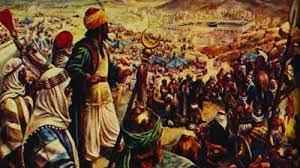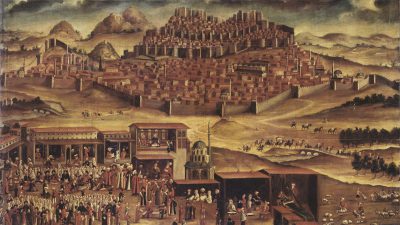Many people use the terms Islamic and Muslim interchangeably, but they are not the same. Islamic refers to anything that is related to the religion of Islam, which is based on the teachings of the prophet Muhammad and the Quran. Muslim refers to a person who follows the religion of Islam and submits to the will of God. In this blog post, we will explore the difference between Islamic and Muslim history, and how they have shaped the world.
Islamic history

Islamic history is the history of the religion of Islam, its doctrines, practices, institutions, and movements. It covers the period from the 7th century CE, when Muhammad began preaching his message of submission to God in Mecca and Medina, to the present day, when Islam is one of the major religions of the world with over 1.8 billion followers.
Islamic history can be divided into several phases:
- The early period (7th-10th centuries CE), which includes the life of Muhammad, the formation of the Muslim community (umma), the expansion of Islam through conquests and conversions, and the emergence of different sects and schools of thought.
- The classical period (10th-13th centuries CE), which is considered the golden age of Islamic civilization, marked by cultural, scientific, artistic, and intellectual achievements under various dynasties such as the Abbasids, Fatimids, Seljuks, Ayyubids, and Mamluks.
- The medieval period (13th-16th centuries CE), which witnessed the decline of some Islamic empires and the rise of others, such as the Mongols, Ottomans, Safavids, and Mughals. This period also saw the interaction of Islam with other civilizations, such as Europe, China, India, and Africa.
- The modern period (16th-20th centuries CE), which was characterized by political fragmentation, colonialism, reform movements, nationalism, and revolutions. This period also witnessed the emergence of new trends and challenges for Islam, such as secularism, modernity, democracy, human rights, feminism, and extremism.
- The contemporary period (21st century CE), which is marked by globalization, diversity, pluralism, and dialogue among Muslims and non-Muslims. This period also faces issues such as terrorism, violence, poverty, injustice, and environmental crisis.
Muslim history

Muslim history is the history of the people who follow the religion of Islam. It covers not only their religious beliefs and practices but also their social, cultural, political, economic, and artistic aspects. It also includes their interactions with other peoples and civilizations throughout history.
Muslim history can be seen from different perspectives:
- Regional perspective: Muslim history can be studied according to different regions where Muslims live or have lived in the past. For example: Middle East and North Africa; South Asia; Southeast Asia; Central Asia; Sub-Saharan Africa; Europe; America; etc.
- Ethnic perspective: Muslim history can be studied according to different ethnic groups that identify themselves as Muslims or have a significant Muslim population. For example: Arabs; Turks; Persians; Kurds; Berbers; Malays; Indonesians; Bengalis; Somalis; Bosniaks; etc.
- Sectarian perspective: Muslim history can be studied according to different sects or branches that have developed within Islam over time. For example: Sunni; Shia; Sufi; Khariji; Ibadi; Ahmadiyya; etc.
- Ideological perspective: Muslim history can be studied according to different ideologies or movements that have influenced or challenged Islam in various ways. For example: Salafi; Wahhabi; Muslim Brotherhood; Jamaat-e-Islami; Hizb ut-Tahrir; Al-Qaeda; ISIS; etc.
Conclusion
Islamic and Muslim history are both important aspects of understanding Islam as a religion and a civilization. They are also essential for appreciating the diversity and complexity of Muslims as a people. By learning about Islamic and Muslim history, we can gain a better insight into the past, present, and future of Islam and its followers.




